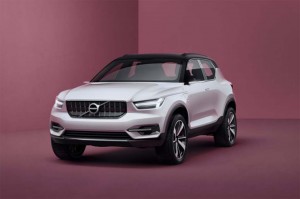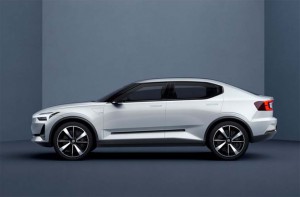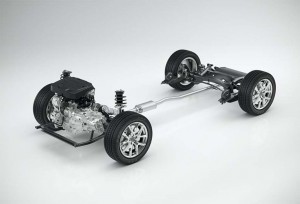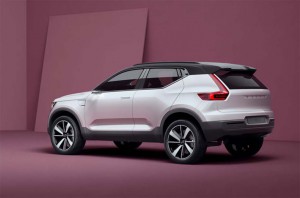Volvo is in the midst of a complete brand makeover, and the automaker is giving us a hint of its next move in an aggressive, top-to-bottom product rollout with the unveiling of the new S40 and XC40 concepts.
Both models will mark a significant step forward, but not only for the Swedish automaker. In production, the next-gen Volvo XC40 and Volvo S40 models will ride on the maker’s all-new Compact Modular Architecture which is designed to be shared with Chinese parent Geely. It is, in fact, a key to Geely’s long-term goal to transform itself into a truly global automaker.
“CMA has helped us to capture something special, something youthful in our new concept cars. They have an energy, a disruptive and engaging urban character that makes them stand out,” said Thomas Ingenlath, Volvo’s senior vice president of design.
Collectively known as the Concept 40 models, Volvo will offer a variety of different body styles, including sedan, wagon and higher-riding Cross Country, or XC. All three will target young, mostly urban buyers looking for an alternative to more mainstream luxury brands like Audi, BMW and Mercedes-Benz.
“By focusing on the needs of urban millennials, we can strike a disruptive blow to a stale segment,” said Ingenlath, who previously worked for Audi, who also suggested, “Our customers do not expect us to do what we did yesterday.”
That said, the new concepts don’t make a complete break from the designs Volvo has offered in recent years, carrying over some familiar details such as the “Thor’s Hammer” LED headlamps.
Going forward, Volvo will use two scalable architectures, or platforms, to handle its entire product range. That includes the larger Scalable Product Architecture, or SPA, used for the brand’s largest and most upscale models, such as the XC90 and the new S90 sedan.
The smaller, CMA will have to serve a myriad of duties, not only covering Volvo’s smallest models but also a series of products coming from the ambitious Geely. The Chinese automaker purchased Volvo six years ago, in part, to help it figure out how to finally break out of its niche as a low-priced domestic manufacturer.
What Geely has in store we’ll have to wait and see. We’ll also have to wait for some more details on the production versions of the Concept 40 prototypes. Volvo has said it will offer the XC40 in both front- and all-wheel-drive, though it’s not confirmed if buyers will be able to tick a box for AWD on the other body styles.
(Volvo planning to add plug-in hybrid options across its product range. Click Here for more.)
As for engines, there’ll be a mix of gas, diesel and electrified models offered in various markets. That includes a scaled down version of the Volvo Twin-Engine plug-in first offered on the XC90, here using a three-cylinder, rather than inline-four, internal combustion engine paired with an electric motor. Expect to see a number around 250 horsepower, with at least 30 miles of range in battery mode.
The pure battery-electric model will be one of many new products taking aim at Tesla, here delivering at least 200 miles of range and according to some reports, nudging that up to 300 miles with an optional battery-pack upgrade. Like Tesla, the battery pack has been designed to minimize intrusion by mounting beneath the load floor.
(Volvo, Google expanding autonomous vehicle testing efforts. For more, Click Here.)
We should see Volvo begin rolling out the EV package on its large models in 2019, with smaller versions like the XC40 to follow shortly afterwards.
With more conventional powertrains, expect to see Volvo begin importing the XC40 to the U.S. next year. It has yet to confirm which other versions will follow.
(Volvo raising nearly $600 mil to help fund its global expansion. Click Here for the latest.)




